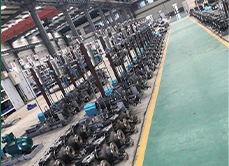Malay
- Afrikaans
- Albanian
- Amharic
- Arabic
- Armenian
- Azerbaijani
- Basque
- Belarusian
- Bengali
- Bosnian
- Bulgarian
- Catalan
- Cebuano
- Corsican
- Croatian
- Czech
- Danish
- Dutch
- English
- Esperanto
- Estonian
- Finnish
- French
- Frisian
- Galician
- Georgian
- German
- Greek
- Gujarati
- Haitian Creole
- hausa
- hawaiian
- Hebrew
- Hindi
- Miao
- Hungarian
- Icelandic
- igbo
- Indonesian
- irish
- Italian
- Japanese
- Javanese
- Kannada
- kazakh
- Khmer
- Rwandese
- Korean
- Kurdish
- Kyrgyz
- Lao
- Latin
- Latvian
- Lithuanian
- Luxembourgish
- Macedonian
- Malgashi
- Malay
- Malayalam
- Maltese
- Maori
- Marathi
- Mongolian
- Myanmar
- Nepali
- Norwegian
- Norwegian
- Occitan
- Pashto
- Persian
- Polish
- Portuguese
- Punjabi
- Romanian
- Russian
- Samoan
- Scottish Gaelic
- Serbian
- Sesotho
- Shona
- Sindhi
- Sinhala
- Slovak
- Slovenian
- Somali
- Spanish
- Sundanese
- Swahili
- Swedish
- Tagalog
- Tajik
- Tamil
- Tatar
- Telugu
- Thai
- Turkish
- Turkmen
- Ukrainian
- Urdu
- Uighur
- Uzbek
- Vietnamese
- Welsh
- Bantu
- Yiddish
- Yoruba
- Zulu
Telephone: +86 13120555503
Email: frank@cypump.com
Ogo . 11, 2024 22:28 Back to list
Optimizing Efficiency and Performance in Modern Wastewater Pumping Solutions for Sustainable Infrastructure
Understanding Sewer Pump Systems An Essential Component of Wastewater Management
Sewer pump systems play a pivotal role in the management of wastewater and sewage in both residential and commercial settings. These systems are crucial for transporting sewage from lower to higher elevation points, ensuring that waste can effectively flow into treatment plants. As urbanization continues to increase and municipalities expand, the need for efficient sewer pump systems becomes even more critical.
At its core, a sewer pump system consists of several components designed to handle wastewater. The primary elements include the pump itself, a collection basin, and a control panel. The pump is responsible for moving the sewage, while the collection basin serves as a holding area for the wastewater before it is pumped out. The control panel monitors the system’s performance and can automatically activate the pump when necessary.
One of the most common types of sewer pump systems is the submersible pump. Unlike traditional pumps, which are installed above ground, submersible pumps are placed below the water level, allowing them to function efficiently in harsh conditions. These pumps are designed to handle solids and other materials that may be present in sewage, making them an ideal choice for many applications. Additionally, submersible pumps are quieter and require less maintenance compared to other types, which adds to their popularity.
Proper installation and maintenance of sewer pump systems are essential for optimal performance
. During installation, it is necessary to consider factors like the system's capacity, the nature of the sewage (whether it’s primarily residential or commercial), and the specific requirements of the site. Selecting the right pump involves assessing the flow rate and the total dynamic head, which encompasses the vertical distance the sewage must be lifted.sewer pump systems

Regular maintenance is vital to ensure that sewer pump systems function effectively and do not become a source of environmental contamination. This involves routine inspections to check for blockages or wear and tear on the pump and associated components. It’s also important to keep the collection basin clean and free of debris that could obstruct the system. Neglecting maintenance can lead to pump failures, which may result in costly repairs and potential health hazards from sewage backups.
In recent years, technology has significantly improved the capabilities of sewer pump systems. Advanced control panels now feature smart technology that can communicate with other systems for a comprehensive wastewater management solution. This includes real-time monitoring for potential malfunctions, enabling rapid response times to prevent failures. Some systems also incorporate variable frequency drive (VFD) technology, allowing pumps to operate at varying speeds based on the flow rate, which can enhance energy efficiency and extend the life of the pump.
Furthermore, as environmental concerns grow, many municipalities are exploring more sustainable options for sewage management. This includes the integration of renewable energy sources to power sewer pump systems, reducing the carbon footprint associated with wastewater treatment. The use of green infrastructure solutions, such as rainwater harvesting and permeable pavements, also supports the reduction of sewage flow into these systems, enhancing their overall efficiency.
In conclusion, sewer pump systems are an essential component of modern wastewater management, enabling the safe and efficient transportation of sewage. Understanding the various types of pumps, their components, and the importance of installation and maintenance can help ensure these systems operate effectively. As technology continues to advance, the efficiency and sustainability of sewer pump systems will likely improve, further enhancing their critical role in protecting public health and the environment.
-
Custom Drilling Mud and Slurry Pump Supplier - High Efficiency, Tailored Solutions
NewsJun.10,2025
-
Supply Vertical Submersible Sewage Pump High-Efficiency WQ/QW Pumps Supplier
NewsJun.10,2025
-
Premium Sewage Ejection System & Pumps Efficient Waste Removal
NewsJun.09,2025
-
Premium Wholesale Slurry Pump Impellers Durable & Efficient Slurry Handling
NewsJun.09,2025
-
Top Sewage Pump Companies Durable Industrial Solutions for Efficiency
NewsJun.09,2025
-
Heavy Duty Slurry Pumps - OEM High Performance & Bulk Wholesale
NewsJun.09,2025










